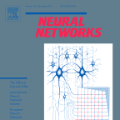Spiking Neural Networks (SNN) exhibit higher energy efficiency compared to Artificial Neural Networks (ANN) due to their unique spike-driven mechanism. Additionally, SNN possess a crucial characteristic, namely the ability to process spatio-temporal information. However, this ability is constrained by both internal and external factors in practical applications, thereby affecting the performance of SNN. Firstly, the internal issue of SNN lies in the inherent limitations of their network structure and neuronal model, which result in the network adopting a unified processing approach for information of different temporal dimensions when processing input data containing complex temporal information. Secondly, the external issue of SNN stems from the direct encoding method commonly adopted by directly trained SNN, which uses the same feature map for input at each time step, failing to fully exploit the spatio-temporal characteristics of SNN. To address these issues, this paper proposes an Unconstrained Leaky Integrate-and-Fire (ULIF) neuronal model that allows for learning different membrane potential parameters at different time steps, thereby enhancing SNN' ability to process information of different temporal dimensions. Additionally, this paper presents a hybrid encoding scheme aimed at solving the problem of direct encoding lacking temporal dimension information. Experimental results demonstrate that the proposed methods effectively improve the overall performance of SNN in object detection and object recognition tasks. related code is available at https://github.com/hhx0320/ASNN.
翻译:暂无翻译





